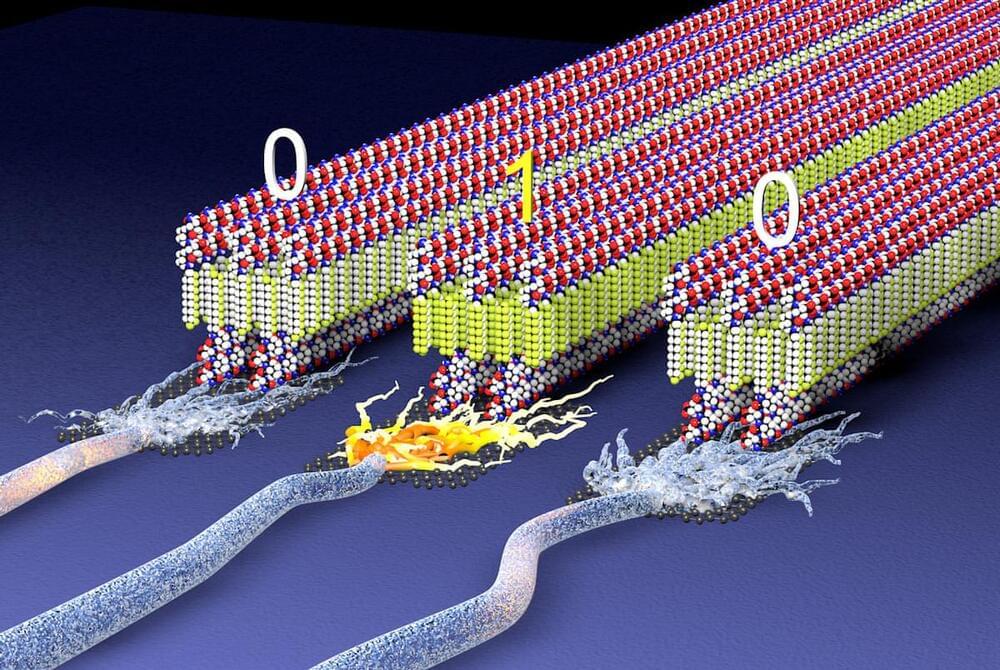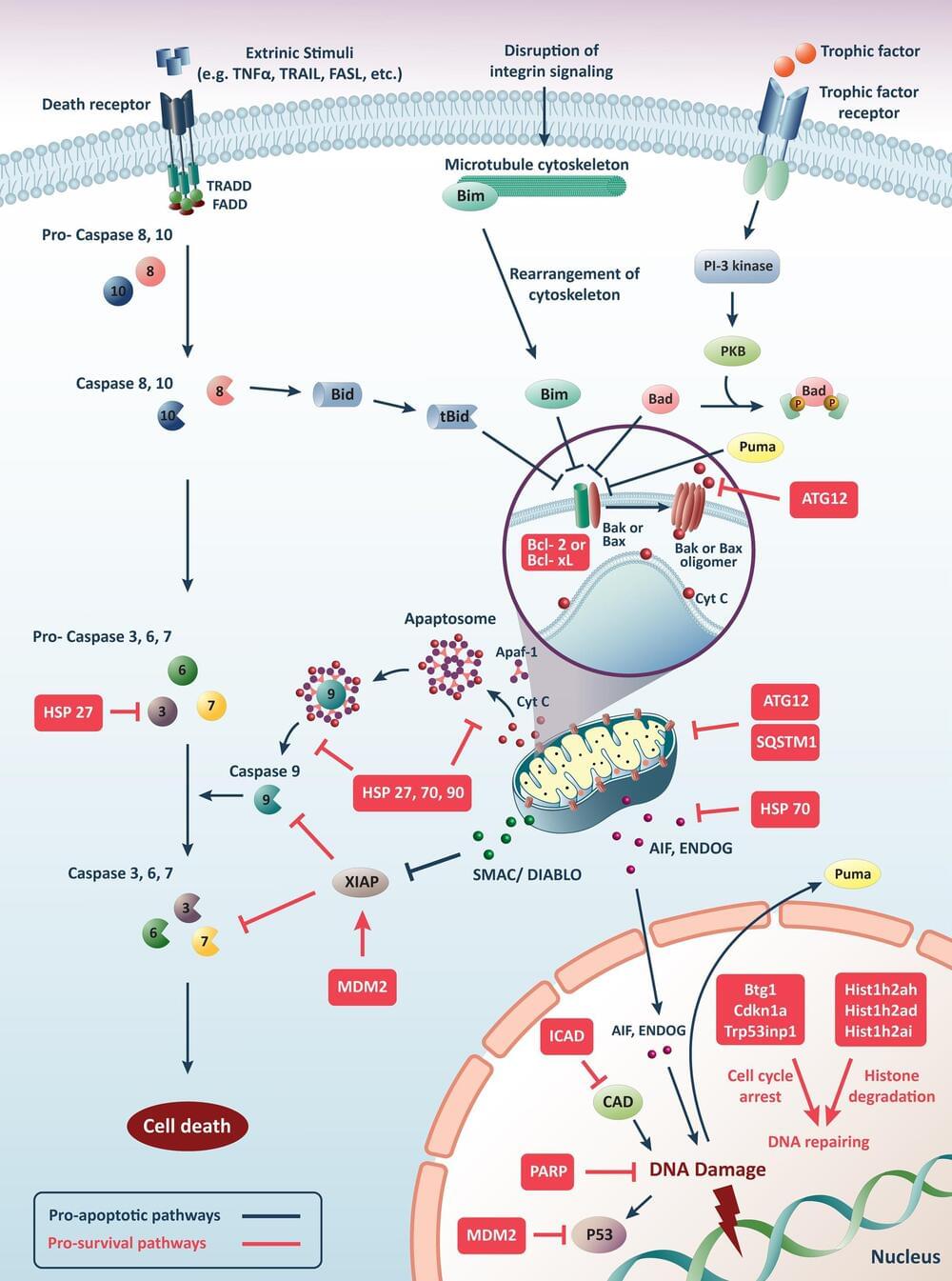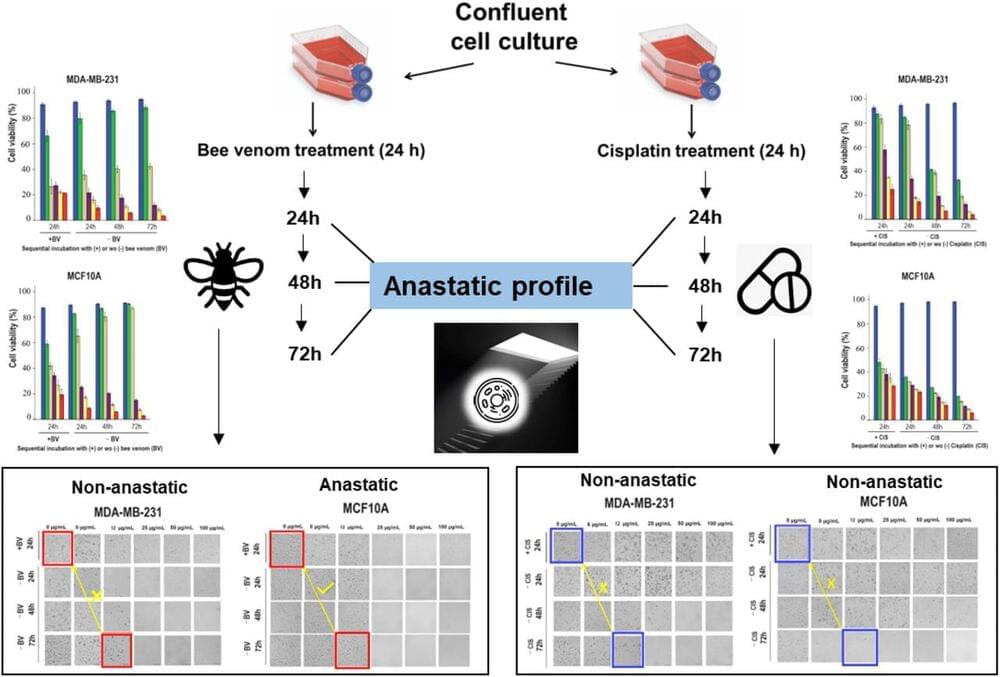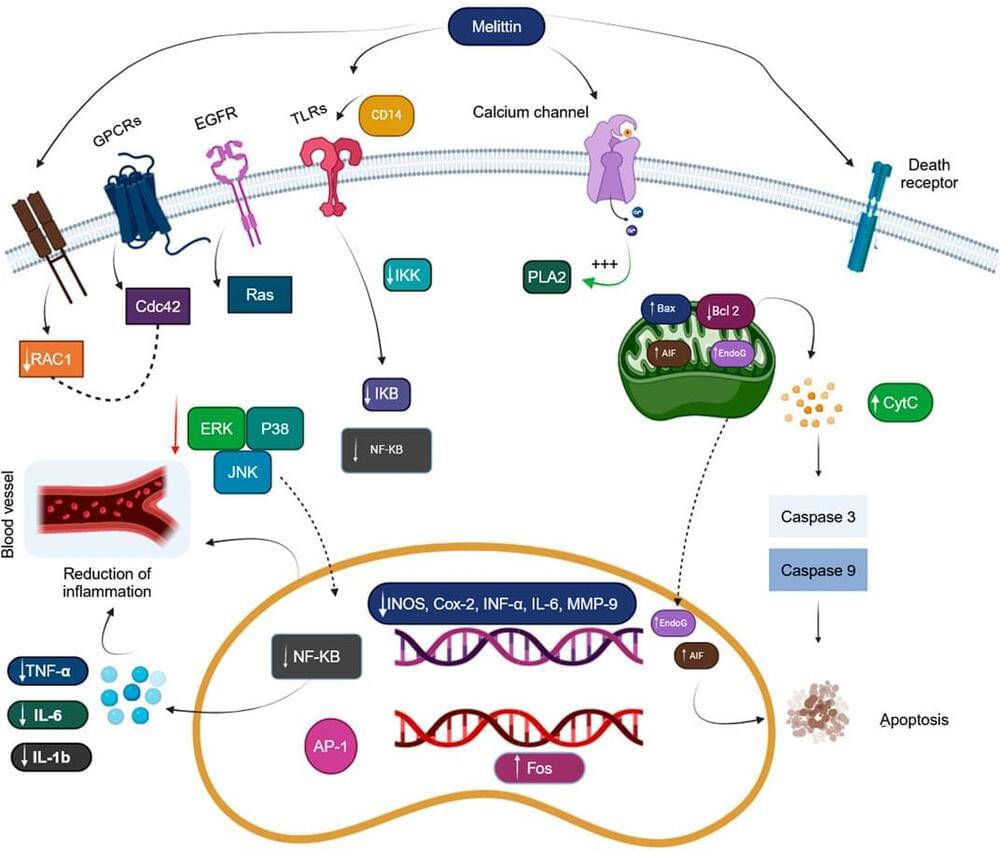Latest posts
Nov 10, 2024
Beyond Tungsten: Scientists Unveil Game-Changing Materials for Fusion Reactors
Posted by Shailesh Prasad in categories: materials, nuclear energy
Can theory and computation methods help the search for the best divertor material and thus contribute to making fusion energy a reality?
Exploring nuclear fusion as a clean energy source reveals a critical need for advanced plasma-facing materials. MARVEL lab researchers identified materials that might withstand fusion’s extreme conditions and proposed alternatives to tungsten, the current choice.
Nuclear fusion and the material challenge.
Nov 10, 2024
What to know before this afternoon’s SpaceX launch from Cape Canaveral SLC-40
Posted by Genevieve Klien in categories: internet, satellites
This afternoon, SpaceX plans to launch its latest Starlink mission from Cape Canaveral Space Launch Complex 40. Then on Monday, the company hopes to launch the Koreasat 6A telecommunications satellite from Kennedy Space Center Pad 39A. Another Starlink mission is then set for launch Tuesday evening.
When is the next Florida rocket launch?Is there a launch today? Upcoming SpaceX, NASA rocket launch schedule from Florida
Today’s launch window for the SpaceX Starlink 6–69 mission opens now at 6:56 p.m. EST. SpaceX states they now only have until 8:22 p.m. to launch.
Nov 10, 2024
Move Over Plastics: Revolutionary Soft, Sustainable Material Set To Transform Medical Devices and Wearable Tech
Posted by Genevieve Klien in categories: biotech/medical, computing, nanotechnology, wearables
Step aside, hard and rigid materials — a new soft, sustainable electroactive material is here, ready to unlock new possibilities for medical devices, wearable technology, and human-computer interfaces.
Using peptides and a snippet of the large molecules in plastics, Northwestern University materials scientists have developed materials made of tiny, flexible nano-sized ribbons that can be charged just like a battery to store energy or record digital information. Highly energy efficient, biocompatible, and made from sustainable materials, the systems could give rise to new types of ultralight electronic devices while reducing the environmental impact of electronic manufacturing and disposal.
The study was recently published in the journal Nature.
Nov 10, 2024
The Mystery of How Neurons Control The Brain Has Finally Been Solved
Posted by Genevieve Klien in categories: business, evolution, neuroscience
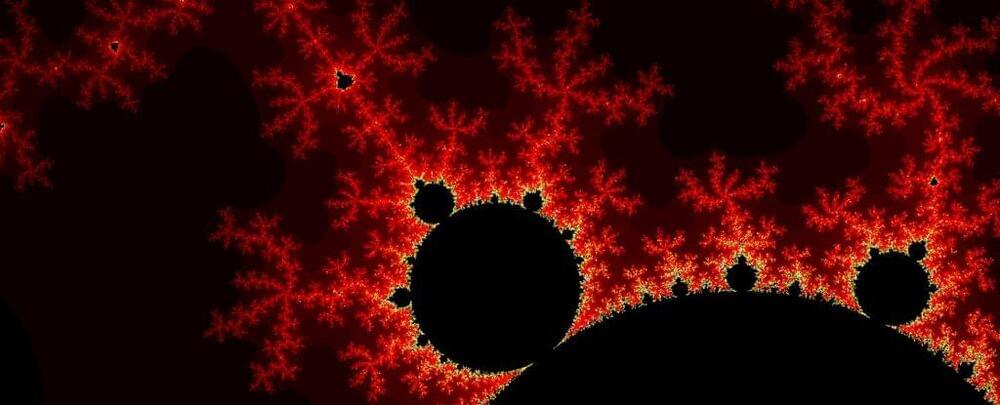
The brain is a marvel of efficiency, honed by thousands of years of evolution so it can adapt and thrive in a rapidly changing world. Yet, despite decades of research, the mystery of how the brain achieves this has remained elusive.
Our new research, published in the journal Cell, reveals how neurons – the cells responsible for your childhood memories, thoughts and emotions – coordinate their activity.
Continue reading “The Mystery of How Neurons Control The Brain Has Finally Been Solved” »
Nov 10, 2024
Researchers Develop System Cat’s Eye-Inspired Vision for Autonomous Robotics
Posted by Natalie Chan in categories: drones, robotics/AI
Feline-inspired vision technology enhances accuracy in challenging environments, paving the way for smarter, more efficient autonomous systems.
Researchers have unveiled a vision system inspired by feline eyes to enhance object detection in various lighting conditions. Featuring a unique shape and reflective surface, the system reduces glare in bright environments and boosts sensitivity in low-light scenarios. By filtering unnecessary details, this technology significantly improves the performance of single-lens cameras, representing a notable advancement in robotic vision capabilities.
Autonomous systems like drones, self-driving cars, and robots are becoming more common in our daily lives. However, they often struggle to “see” well in different environments — like bright sunlight, low light, or when objects blend into complex backgrounds. Interestingly, nature may already have the solution to this problem.
Nov 10, 2024
Anastasis: cell recovery mechanisms and potential role in cancer
Posted by Quinn Sena in category: biotech/medical
Balanced cell death and survival are among the most important cell development and homeostasis pathways that can play a critical role in the onset or progress of malignancy steps. Anastasis is a natural cell recovery pathway that rescues cells after removing the apoptosis-inducing agent or brink of death. The cells recuperate and recover to an active and stable state. So far, minimal knowledge is available about the molecular mechanisms of anastasis. Still, several involved pathways have been explained: recovery through mitochondrial outer membrane permeabilization, caspase cascade arrest, repairing DNA damage, apoptotic bodies formation, and phosphatidylserine. Anastasis can facilitate the survival of damaged or tumor cells, promote malignancy, and increase drug resistance and metastasis.
Nov 10, 2024
Anastasis induced by bee venom in normal cells compared to persistent cell death in breast cancer cells
Posted by Quinn Sena in category: biotech/medical
Anastasis is a phenomenon that has been recently defined as a return from induced apoptosis. Its mechanism has not been clearly elucidated. Anastasis is thought to be involved in the development of drug resistance in cancer cells, however the distinct regulation of anastasis in normal and cancerous cells during anti-cancer therapy has not been discovered. One of the most privileged therapy strategies focuses on the drugs that are selectively cytotoxic in cancer cells but not negatively affect normal cell proliferation. This study for the first time comparatively evaluated the anastatic effect of a common synthetic cytotoxic agent, cisplatin and a natural cytotoxic agent, bee venom. The study showed that bee venom induced anastasis in normal cells (MCF10A, NIH3T3 and ARPE19) but cancer cells (MDA-MB-231 and MCF7) were irreversibly in cell death process.
Nov 10, 2024
Frontiers: Honeybees have been helpful insects since ancient centuries, and this benefit is not limited to being a honey producer only
Posted by Quinn Sena in categories: biotech/medical, chemistry, food, nanotechnology
After the bee stings a person, pain, and swelling occur in this place, due to the effects of bee venom (BV). This is not a poison in the total sense of the word because it has many benefits, and this is due to its composition being rich in proteins, peptides, enzymes, and other types of molecules in low concentrations that show promise in the treatment of numerous diseases and conditions. BV has also demonstrated positive effects against various cancers, antimicrobial activity, and wound healing versus the human immunodeficiency virus (HIV). Even though topical BV therapy is used to varying degrees among countries, localized swelling or itching are common side effects that may occur in some patients. This review provides an in-depth analysis of the complex chemical composition of BV, highlighting the diverse range of bioactive compounds and their therapeutic applications, which extend beyond the well-known anti-inflammatory and pain-relieving effects, showcasing the versatility of BV in modern medicine. A specific search strategy was followed across various databases; Web of sciences, Scopus, Medline, and Google Scholar including in vitro and in vivo clinical studies.to outline an overview of BV composition, methods to use, preparation requirements, and Individual consumption contraindications. Furthermore, this review addresses safety concerns and emerging approaches, such as the use of nanoparticles, to mitigate adverse effects, demonstrating a balanced and holistic perspective. Importantly, the review also incorporates historical context and traditional uses, as well as a unique focus on veterinary applications, setting it apart from previous works and providing a valuable resource for researchers and practitioners in the field.
Bees are commercially beneficial insects that have been around since the Cretaceous age of the Mesozoic Era. They also help fertilize many different crops. Bees are helpful, but their capacity to administer excruciating and poisonous stings constitutes a risk. Thankfully, most honeybees are not hostile to people and only resort to violence if they perceive danger (Pucca et al., 2019). Apis mellifera is the most often used honeybee species for agricultural pollination globally. All bee products, particularly venom, and honey, have been used for centuries, and their medicinal properties have been described in holy writings such as the Bible and the Quran (Ali, 2024; Dinu et al., 2024). Bee venom (BV) treatment involves injecting honeybee venom into the human body to cure various ailments. For over 5,000 years, this technique has been used in complementary therapies.
Nov 10, 2024
The Kardashev Scale: Type 1 To Type 7 Civilizations And Reverse Scale
Posted by Jose Ruben Rodriguez Fuentes in categories: alien life, Elon Musk, supercomputing
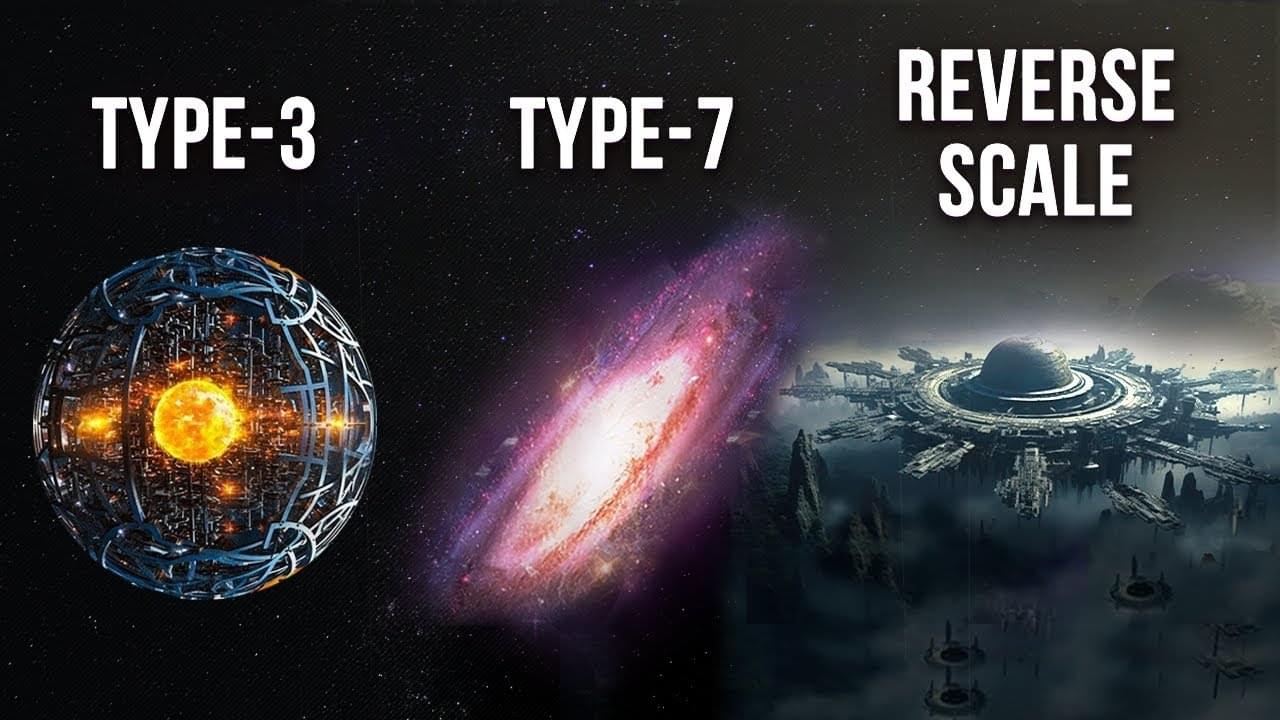
Discovering Advanced Civilizations: Type 1 To 7 And Minus 0 To Minus 3: How Far Can We Go?
he kardashev scale type From Type 1 To 7 And Theand Reverse Scale: How Far Can We Go?
The Kardashev scale is a method used to determine a civilization’s technological advancement, which divides civilizations into three types, with type 1 being the simplest civilization of all.
The civilization created by the human race is not yet advanced enough to be considered a type 1 civilization. How long until we reach that classification? Stay to find out.
“Introduction“
Astrophysicist Nikolai Kardashev developed the Kardashev scale in 1964 to determine some characteristics that would facilitate the search for extraterrestrial life.
After analyzing several conditions in the history of the human race, Kardashev realized that there is a need that grows as civilization does, energy.
As the human race has expanded worldwide, so needs for energy.
Suppose this is inherent in all species that become an intelligent race. In that case, a hypothetical race of aliens who come to forge a civilization as significant or more extensive than that of humans will eventually also have an energy deficit.
To solve this energy need, an extraterrestrial race must develop technologies to meet the demand for energy needed to sustain all members of their civilization.
Kardashev theorized that in this sense, there must be 3 types of civilizations:
Type 1: A civilization that can harness all the energy its home planet gives them.
Type 2: A civilization that can harness the energy of its entire solar system.
Type 3: A civilization that can harness all the energy provided by the galaxy it is in.
“A type VII or K7 civilization would travel, transcend and ultimately oversee or ”be” the Omniverse which is the collection of every single universe, multiverse, megaverse, paraverse, 11d dimension, and 1st realm (reality). Everything is in the Omniverse, and there is only one Omniverse.” In other words, such a civilization would be as closest as godly as possible.
However, the achievement of a type 7 civilization will only be the end of a very long process of technological advancement and connection with the cosmos. To get there, we would first need to go to all the other civilization types that make up the scale. Let’s see what they consist of.
–
Continue reading “The Kardashev Scale: Type 1 To Type 7 Civilizations And Reverse Scale” »



